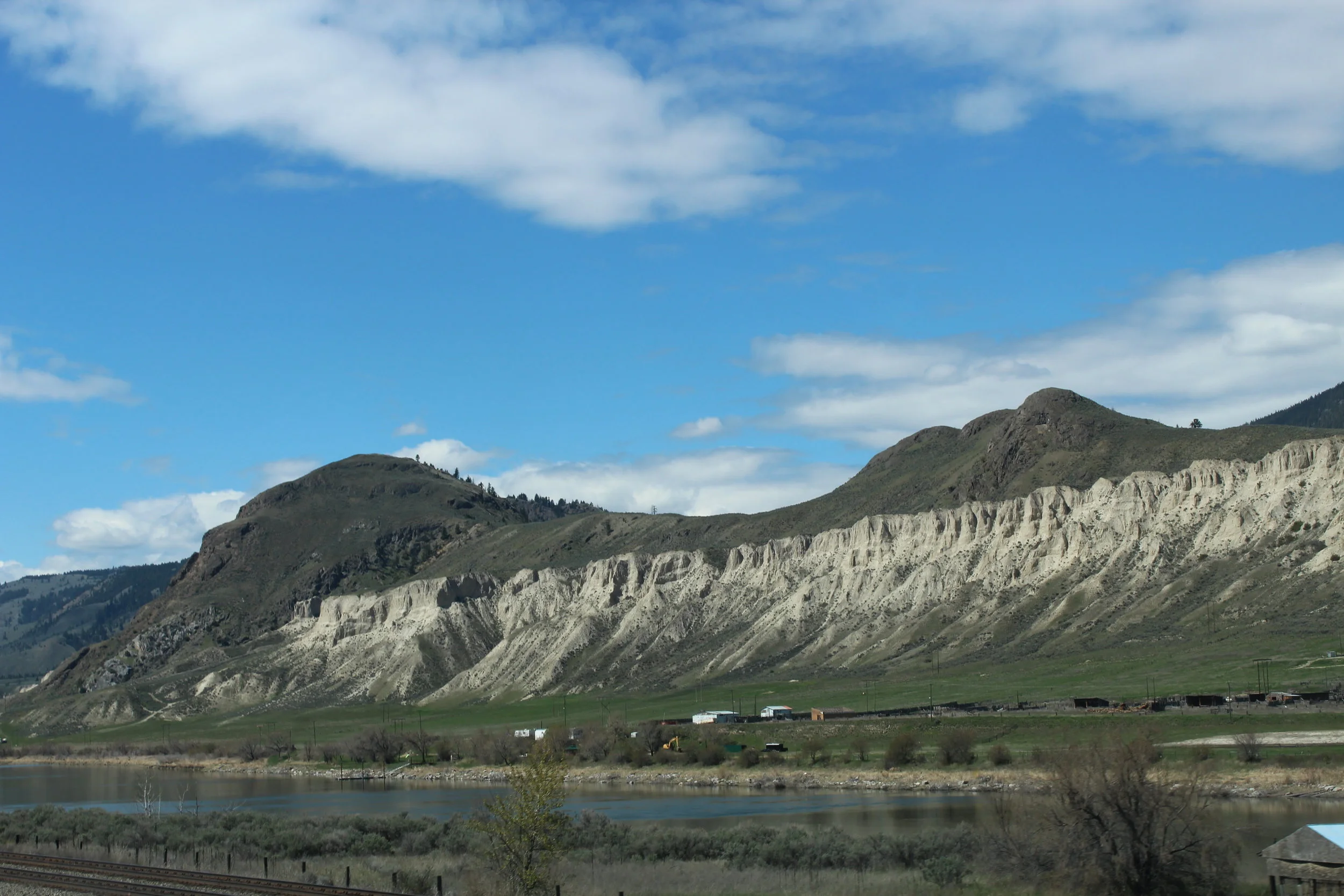The dust hasn’t settled yet, but recently in Kamloops a 5,000 year old archaeological site was unearthed during construction. The site is one page in a book. When we read it along with all the others, we start to get a big-picture view of the human lives lived here over millennia.
In this space we often talk about practical and technical aspects of archaeology, and how Indigenous traditional knowledge and stewardship inform and support our interpretations of the past. All of those methods and perspectives help to build the story, too.
Today, let’s look at what archaeology tells us about those lives, 5,000 years ago, right here where the North and South Thompson Rivers come together at Tk’emlups.
5,000 years ago, the climate was a bit warmer and drier than today. Very dry desert and grasslands were more extensive, and roamed by large herds of elk, antelope & bighorn sheep and deer that provided a steady food source.
The mild climate allowed people to live lightly: shallowly excavated “mat lodges” topped with fiber mats were used in winter, and portable, open-air shelters the rest of the year, taken along as people traveled to harvest seasonally available plant and animal resources throughout the territory.
5,000 years ago, the population here was genetically diverse, part of the evidence for direct and indirect contact with the coast and the Columbia Plateau. Travel and trade in these regions brought exotic goods to Tk’emlups, like Oregon obsidian, and exotic shell beads from coastal regions.
Sometime shortly before 5,000 years ago, people from Coast Salish lands began traveling regularly into this part of the Interior after the prolific salmon runs. At first these were seasonal trips by small family groups, who returned to winter in coastal valleys. Gradually, though, they made kin and began to stay. This became what’s known as the Salishan migration.
For several centuries, there was a slow, transitional process of mutual acculturation-exchange of genes, technologies, ecological knowledge, and languages. We see this in archaeological sites where Interior/Coastal traditions and styles commingle. We see it too, in the roots of the ancestral Secwépemc language family, created as the language of Coyote’s people merged with that of the Salmon people.
Shortly after 5,000 years ago, the climate was shifting. Winters became colder and wetter. People began to build deeper, sturdier, more insulated pithomes in sheltered valleys, and a cozy settled winter became part of the seasonal round.
Around 5,000 years ago, as life became more river-oriented, people turned less often to deer, elk and other upland foods and more and more to salmon. Smoking fish was widely adopted to preserve winter supplies. By 5,000 years ago, salmon made up about 40% of Secwepemc dietary protein.
But people’s diets were still impressively diverse: rabbits, beaver, marmot, muskrat, porcupine, bear, turtle, duck, loon, goose, freshwater fish and mussels, and of course, deer and elk, were in regular rotation around Secwepemc ancestral hearths. Not to mention a bounty of roots, shoots, and berries.
Around 5,000 years ago, popular goods included leaf-shaped and lance-like tools that function as knives or projectiles depending on how you haft them. Bone points of all kinds were super common too, and could be put to many uses, from composite fish hooks to rakes used to collect small fish, mussels or berries, or as simple hair or blanket pins.
Even after 5,000 years ago, climate was still a bit unsteady. Characteristic Thompson silts, borne by winds, were deposited in thick layers around this time. For archaeology, this means older sites are often deeply buried and hard to find.
When you look out across the Kamloops landscape, think of this page from 5,000 years ago. Imagine all the other pages too. These lands are saturated with history, these lives are marked on the land. All we have to do is read the story.

